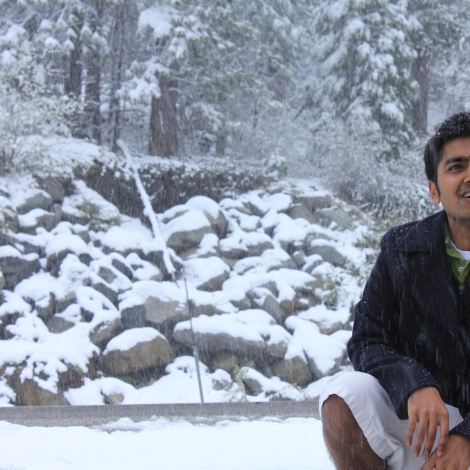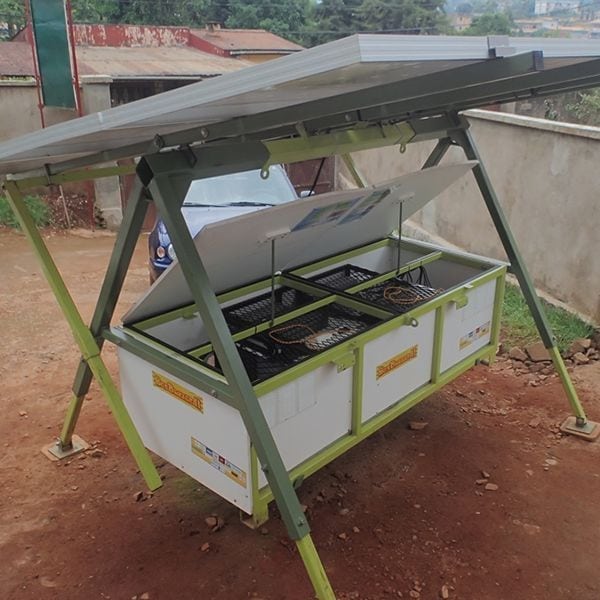Residents of 18 villages in rural India pay for solar electricity the same way that they pay for cell phone minutes and for groceries. They pay up front for a fixed amount of electricity and then go back to buy more when they need it. Local entrepreneurs sell the power and a startup called Gram Power builds the infrastructure and oversees operations.
Gram Power has built solar power generators and installed its own proprietary smart meters in the homes of nearly 7000 people. And with a $1 million grant from USAID in September 2014, the company is on track to provide electricity for upwards of 25,000 people by the middle of 2015.
The meter makes people conscious about their power consumption. They start budgeting their monthly expenses. They switch into more efficient appliances, and it improves billing and payment efficiency dramatically.
Yashraj Khaitan was a founding member of the venture in 2010 when he was still a student of electrical engineering and computer science at the University of California, Berkeley, in 2010. Gram Power collected accolades from the likes of Intel and NASA before starting commercial operations in 2012.
Khaitan figures that his company can provide clean solar energy for less than the cost of kerosene, and reduce theft and defaults on electricity bills with its meters and sales strategy. The company is in the midst of an expansion into Kenya, and Khaitan expects that Gram Power will cover 2 million families in Africa and India within the next five years. We caught up to Khaitan during a lull in his travel plans to ask him five questions.
E4C: Part of your USAID grant funds research into how people use power in communities with your smart meters and how they use it in those without. Can you tell us about any preliminary findings?
YK: What we’ve observed in the last 18 systems that we’ve done is that there is a lot of change that we are able to cause with the prepaid model, and with the smart grid system that we install in our micro grids. It essentially brings about a lot of efficiency and a lot of affordability in power distribution and, in part, consumption. The USAID project is allowing us to scale and replicate that effect. And plus the project is allowing us to work with communities on the national grid and demonstrate that the same kind of effect can also be caused in grid-connected villages.
We monitor consumption by the information that the meter is giving, and that ends up making people extremely conscious about their power consumption. They start budgeting their monthly expenses. They automatically switch into more efficient appliances, and it ends up improving billing and payment and collection efficiency dramatically.
We’ve managed to decrypt electricity for people.
The payment system that the utilities have is that consumers need to travel several tens of kilometers to a payment center, which is far from these remote villages. It ends up costing them a lot to make a payment. And as a result, a lot of the payments end up in default. We make payments wirelessly at the consumer’s doorstep and we end up commoditizing power, because people are able to purchase power just as they would purchase rice or veggies and things like that.
Plus, there’s a lot of value added that’s brought about from the infrastructure data that we are able to collect. We’re able to figure out exactly where there are problems and technical faults in the grid. And being able to detect that remotely and resolve that in a timely manner also ends up improving your system’s uptime and supply quality.
It’s all of these advantages that happen both for the consumer and for the utility, which is something that we are trying to get more credible results on.
E4C: How do you handle the challenge of maintaining the power generators and keeping the meters up and running?
YK: The entrepreneurs are trained for most troubleshooting errors, which they take care of themselves. If there’s a manufacturing defect in any component, then our field engineers repair or replace the equipment. We have tie ups with our contractors too who provide these technical services for the generation system.
E4C: In your opinion, why does your model work?
YK: We’ve managed to decrypt electricity for people. Power was always something that was a very cryptic subject for people. There was never any thought put into how customers can engage with power distribution in order to make distribution much more useful, much more effective, much more efficent. The fact that our meters are able to do that in a manner that consumers easily understand. That’s something that ends up causing the impact that the technology is having. It’s a combination of technology as well as business model.
E4C: Is this the future of energy production in India or is it a transition to something new in the future?
YK: The advent of the smart meter allows for control of the grid and management from the cloud. It’s definitely something that is of the future. But not the distant future. It needs to be adopted relatively soon. It will have a far-reaching impact over several decades to come. Of course there’s a lot more that can be done once you’re able to get control in the cloud and once you have a large number of smart meters out on the market. It’s the same as when smart phones came out, the initial smart phone was not very smart, but the fact that you had that much computing power available in everybody’s hands created a lot of opportunity for a lot more things to be possible.
E4C: Story time: When did you know that you’re in the right line of work?
YK: It’s definitely been a rollercoaster ride all these years that I’ve been into it. There have been several such experiences spending time with our customers and seeing the impact on the ground has really made me feel that this is something that I’d like to do for the long run.
The advent of the smart meter allows for control of the grid and management from the cloud.
The second system that we had done was in a very remote village in a forest, and that particular village had existed for 150 years but it did not have access to electricity. There was a local entrepreneur from the village who had gotten to know about our work from articles published in the newspaper. And it was this individual who took the initiative to bring the system to his village as well. In a very short time, there were only a few weeks before Diwali, the Festival of Lights, and we were able to light up this village that did not have any access to electricity in time for the celebration. Over the last year and a half, people in the village had started with lights, but now they’re using water pumps, steam irons, televisions and coolers and all kinds of things.
The kind of respect and gratitude that was demonstrated by the villagers for us having contacted them was completely worth the challenges that we faced in order to install that system and get them electricity.

